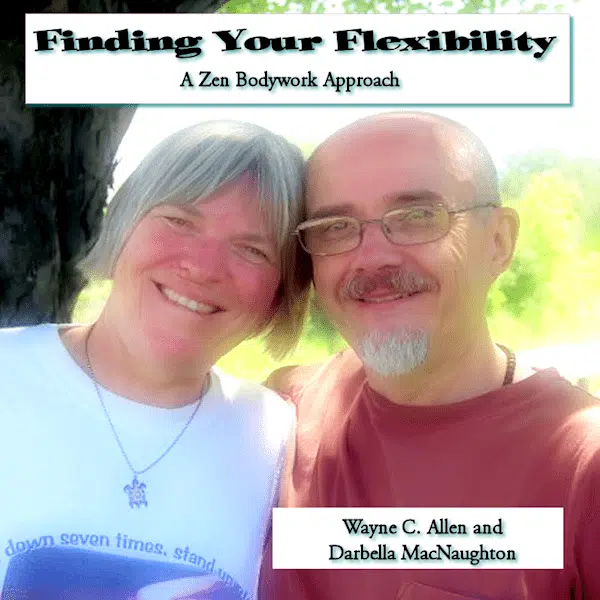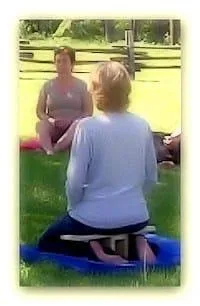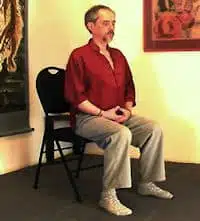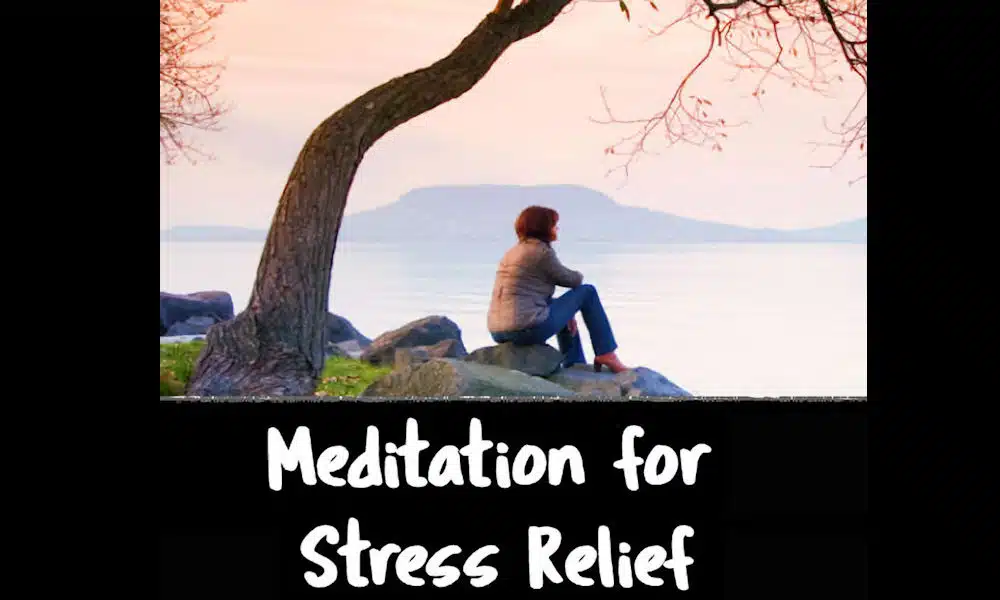Learn Meditation–a skill and a practice that we talk about a lot. It’s in my books, and a part of our life.

Want more help with things like dealing with stress, learning to combat pain naturally, meditation and Qi Gong? Check out our Book / Videos packet, Finding Your Flexibility. It’s a pdf guide, and a group of online videos.

My own experience with meditation began in 1969, and good ole’ Elmhurst College. There was a Transcendental Meditation Group on campus, and I checked it out.
One thing I learned was that I didn’t like mantras — you got “given” one by the leader, and were supposed to focus on it as you “sat.” My little mind never did like being told what to do… at least by outsiders.
But I liked the idea of “just sitting,” and did so in fits and starts for some years. Some decades later, having spent much time reading Zen literature, I decided we needed some formal Zen training.
Off Dar and I went to the Toronto Zen Centre
The process there was pretty rigid and formal, and again, nether of us were fans. But the leader was kind of neat. We had a long “sit” and practiced a couple of the “normal” Zen techniques:
- counting breaths
- counting only in-breaths
This was preceded by lessons in how to sit.

I still believe that “proper” meditation involves cushions and one of the approved of postures. But as I’ve gotten older, and because we are now tavelling most of the time (hence no cushions), I’ve come to believe that any “sitting quietly” time is better than none.
Let me outline a seated in a chair posture, and then give you a couple of focus suggestions.
I’m presently writing this in Spain and am sitting at the dining room table. The chairs are wooden. They’d be perfect for meditation.
- You want a firm, solid, un-padded chair.
- Sit on the front half of the chair, so your back IS NOT touching the chair’s back. Plant your feet firmly on the ground, maybe a foot or so apart.
- Sit up straight. Imagine that a hook is attached to the top of your head, and is pulling upward.
- Sway a bit side to side, feeling for “centre.” Sway a bit front to back, feeling for “centre.”
- Keep your eyes open and relaxed, and tip your head down just a tad, so you’re looking 4–6 feet ahead.
- Cross your hands on your lap.
Of course, there’s a video.
How to Quiet Your Mind
Meditation is not, as people often mistakenly assume, about emptying your mind of all thoughts. The nature of our mind is to have thoughts. Thoughts arise and will persist in doing so if we try to stop them. Buddhists call this the “monkey mind.”
Rather, we can give the mind something to do; whether that’s counting breaths, or simply watching itself do its thing.
Counting breaths: Our little minds do like assignments. This one is simple. Count each in-breath and each out-breath. Try to get to 20.
You won’t… but try.
You won’t because our minds get bored, and are also quite used to tossing up dumb thoughts. So, when a thought arises, have a breath, and start back at 1.
Just sit: There is a whole school in Zen devoted to “just sitting.” Instead of counting, just breathe comfortably. As a thought arises, say internally, “thinking.” Let the thought go.
Remember: Our tendency is to follow our thoughts. We see a scene from our past, and poof, we’re 20 and meditating at good ole’ Elmhurst College.
So, the goal here, such as it is, is to gently stop the thought-stream. As soon as you notice you’ve pulled an Elvis (you’ve left the building…) have a breath, and come back to just sitting.
Do either of these methods for 15 minutes per day. for a week or so. If it’s working for you, go for 30 minutes.
That is basically it. Thoughts will come and go. We do not need to lay any heavy trip upon ourselves for having thoughts. Just notice them, and remind the mind of its task.
Breathwork

Breathwork is a Haven creation, and a great way to get into your body before or after a “day to remember.” No props necessary.
- Lie on your back.
- Raise your knees so your feet are about one foot from your butt.
- Move your feet so they and your knees are about a fist’s width apart. (Obviously, insert your fist between your knees to check.)
- Close your eyes
- Open your mouth an inch or so.
- Breathe. The in-breath should fill your lungs and elevate your chest AND your belly.
- Breathe out. On the out-breath, make a sound, starting with “ah.”
- As you breathe, you can massage your jaw hinges.
Here’s a video!
Check out our page on Breathwork, here.
Give this a try, and notice how quickly emotions arise. Just let them come.

